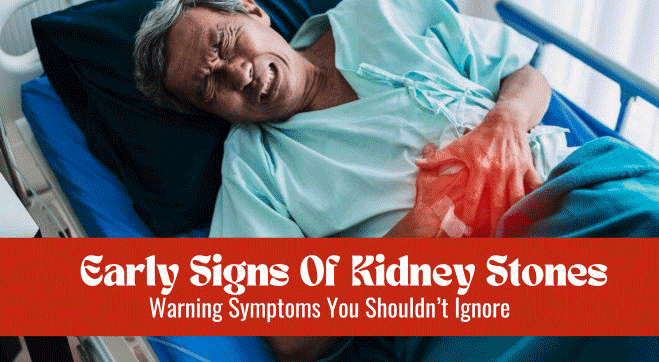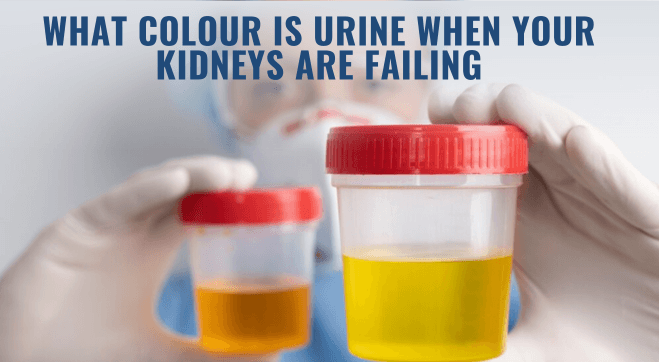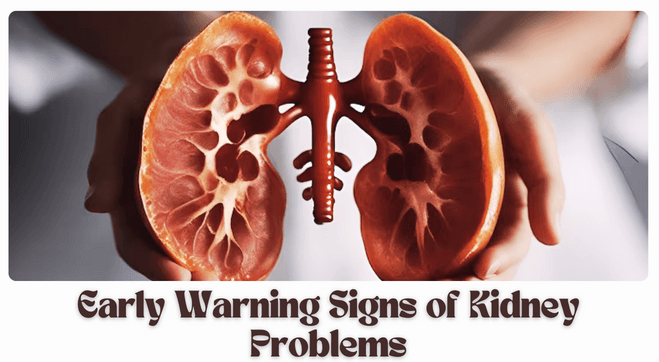One of the most common conditions that affects the urinary tract is kidney stones or nephrolithiasis.
In recent years, the prevalence of kidney stones has also been on the rise1. This may be attributed to multiple factors. Some of those factors include an increasing incidence of lifestyle disorders like diabetes and changes in dietary habits. We’ll discuss them in detail later in the article.
Did you know:
- There is more than one type of kidney stone: Contrary to popular belief, There are four kinds of kidney stones: calcium, struvite, uric acid, and cystine. Each type can cause different symptoms.2.
- Kidney stones can be of different shapes: They vary in shape. Struvite stones, known as staghorn calculi, are large and branch-like, while cystine stones are hexagonal. 3
- Kidney stones come in different sizes: They can be tiny (a few millimeters) or massive (up to 5 inches long and 4 inches wide).4
- One in ten people will have a kidney stone at some point: Kidney stones are surprisingly common, with Over 500,000 people visit ERs yearly due to kidney stones.
- Kidney stones can occur in all age groups: They can affect anyone, but the risk peaks between ages 40-60. Having one stone increases the chance of more, with 35-50% developing another within a decade. 5
What Are The First Signs of Kidney Stones?
Here is a list of some of the most important signs and symptoms of a stone in the kidney, along with a short description of each: 6
Renal colic
Renal colic, or simply kidney stone pain, is one of the most specific symptoms of a stone in the kidney. The pain correlates to the movement of the kidney stone along the urinary tract and finally lodging itself within the ureter. This movement creates a gradient of pressure within the narrow confines of the walls of the ureter, which effectively gets translated to the sensitive nerve fibres around the region. Such electrical signals transmitted via the nerve fibres reach specific brain areas, ultimately perceived as pain.
Even though the location of the pain keeps altering with the location of the kidney stone within the body, it usually induces pain in the back, abdomen, and sometimes even the groyne region.
Concerning the episodicity of the pain, it’s best described as intermittent, which implies that the spectrum may range from debilitating episodes of pain on some days to completely pain-free days. In rare circumstances, even the smallest stones may get dislodged in the ureter and cause severe pain.
Pain or Discomfort While Urinating
Yet another crucial finding among the signs and symptoms of kidney stones is the presence of pain or experiencing some discomfort while urinating. In medical terminology, it is referred to as dysuria and is said to be strongly associated with a urinary tract infection (UTI).
While it may be hard to differentiate between the two conditions, you may notice subtle differences in their presentation. Patients experience a typical burning sensation in the case of a urinary tract infection, whereas in kidney stones, it’s a type of sharp, stabbing sensation. Moreover, UTI pain curtails the lower abdomen. On the contrary, kidney stone pain occurs in the back and the underside of the ribs.
This distinction is crucial since the treatment modalities vary significantly for a urinary tract infection and a kidney stone. You can manage UTI medically with appropriate antibiotics. However, kidney stones may get extruded out on their own with adequate hydration or may necessitate the need for surgical methods like lithotripsy, which uses lasers to break down larger stones into smaller pieces or other invasive surgeries such as percutaneous nephrolithotomy, which involves the surgeon creating a narrow tunnel onto the kidney 7.
Increased Frequency of Micturition
The need to use the toilet more regularly than usual might prompt the diagnosis of a kidney stone 8. It is one of the early symptoms of kidney stones. Usually, it implies that the kidney stone has traversed to the bottom half of the urinary tract. Urinary urgency may also point towards an underlying urinary tract infection.
Foul-Smelling Urine
Normal urine is said to be amber-coloured with no distinct odour. If a patient’s urine is excessively cloudy or seems to emanate a foul odour, it may suggest a urinary tract infection. It’s important to note that while a UTI might occur alone, it may also occur in tandem with nephrolithiasis. Recent studies have shown that as many as 18.7 to 36% of patients with a kidney stone had an underlying urinary tract infection. 8
Blood in Urine
Blood in the urine is one of the giveaways of kidney stones. This condition is medically known as hematuria. You can undergo a urine routine test for diagnosis. A urine sample is examined under a microscope to check for red blood cells.
A scenario where the red blood cells are not visible to the external eye and are assessed under a microscope is called microscopic hematuria. Hematuria can manifest in several medical conditions, some more alarming than others. 9
Nausea and Vomiting
Nausea and vomiting are generally non-specific symptoms of kidney stones. They occur due to the triggering of nerve endings common to the kidney and the gastrointestinal tract. Some theories suggest that nausea and vomiting may be the body’s way of dealing with an episode of renal colic.
Fever and Chills
Fever and chills are usually indicative of infective foci present somewhere in the body. While fever may be a non-specific feature, it hints at nephrolithiasis when accompanied by other signs and symptoms of a kidney stone. Chills with a fever are an involuntary response of skeletal muscles in such circumstances.
Do Kidney Stone Symptoms in Men and Women Vary?
While kidney stones are a common concern for both men and women, there can be subtle differences in how they manifest. Let’s examine these variations in symptoms, helping you identify potential kidney stones based on gender.
Kidney Stone Symptoms in Men
Men who suffer from kidney stones may experience symptoms that are less typical in women, including:
- Testicular Discomfort: Some men might feel discomfort or pain in the testicles, which can occur due to the stone being close to this region.
- Groyne Discomfort: The pain from kidney stones can also manifest in the groyne area, making it particularly distressing for men. 10
Kidney Stone Symptoms in Women
Women may indeed have a different set of challenges and symptoms when dealing with kidney stones. Unique symptoms or issues they might face include:
- Increased Risk of Urinary Tract Infections (UTIs): Kidney stones can heighten the risk of UTIs in women due to blockages and irritation that foster bacterial growth.
- Pelvic Discomfort: Sometimes, kidney stones can cause pelvic discomfort in women, which can be confused with issues and symptoms related to gynaecological health.
What Are Some of the Risk Factors Associated With A Kidney Stone?
The following list of risk factors includes kidney stone symptoms that may develop. Some risk factors are modifiable with a change in lifestyle patterns, while others are non-modifiable. Some of these include:
- Sex: Being a male isn’t a risk factor, but studies show that males are more susceptible to developing the signs of kidney stones 11. While there aren’t any definite explanations for this trend, some potential theories regarding the varying presentation of signs and symptoms of a kidney stone include differences in urine composition and fluid intake.
- Prior history of having experienced kidney stone symptoms: A significant risk factor for kidney stone development is a prior history of kidney stone removal or treatment. Kidney stones tend to recur, and the odds of developing a kidney stone for the second time may be as high as 50% (over a decade). Hence, it is necessary to get a routine, complete health checkup in such circumstances. 12
- Family history of kidney stones: A family history of kidney stones can elevate the risk of developing them by 2.5 times. Disorders under this purview are hypercalciuria, cystinuria, primary hyperoxaluria, Lesch-Nyhan syndrome, etc. 13
- Obesity: Although there is no definitive evidence to establish a correlation between obesity and the presence of kidney stone symptoms, it has been hypothesized that high body fat levels might affect urine composition and inflammation rates.14
- Hyperparathyroidism: It is a clinical condition wherein the parathyroid glands in the neck pour their secretions in excess, thereby increasing the calcium concentration in the blood. Consequently, they increase the chances of developing early symptoms of kidney stones. 15
- Gout: It is a medical condition characterised by increased uric acid concentrations in the body 16. Gout increases the susceptibility to developing uric acid stones in the kidney or elsewhere in the urinary tract.
- Significant surgical history: Surgical procedures that may lead to the development of early signs of kidney stones include gastric bypass surgery or other gastrointestinal tract surgeries.
- Drugs: A variety of drugs across categories may trigger the development of symptoms of stones in the kidney. These drugs include diuretics, calcium-based antacids, etc. 17
- Diabetes: One potential explanation for this association with early signs of kidney stones is that diabetes causes elevated levels of circulating insulin in the body, resulting in increased acidity of the urine. It consequently leads to the development of uric acid stones in the kidney. 18
Conclusion
Kidney stones are more common than one would think, and they are one of the more common clinical conditions that a urologist is likely to encounter in routine practice. It might be prudent to visit a healthcare facility and get checked if you exhibit any of the stated signs and symptoms of kidney stones, like renal colic, dysuria, hematuria, pyuria, fever, and chills.
Risk factors for the development of early symptoms of kidney stones, like previous history of being treated for the signs of a kidney stone, and certain genetic conditions, will also have to be taken into account. The presence of kidney stones along with a urinary tract infection is considered a surgical emergency.
Sources
Ref Links:
- The Demographic Diversity of Food Intake and Prevalence of Kidney Stone Diseases
- 10 Surprising Facts About Kidney Stones
- Cystinuria
- Worlds Largest and Heaviest Kidney Stone Removed
- Kidney stones
- 8 Signs and Symptoms of Kidney Stones
- Percutaneous Nephrolithotomy / Nephrolithotripsy
- Kidney Stone Disease, Urinary Tract Infection ‘Mutually Coexisting’
- Microscopic Hematuria
- Kidney Stones
- Factors associated with sex differences in the risk of kidney stones
- Nephrolithiasis (Kidney Stones)
- Epidemiology of Kidney Stones
- Impact of Obesity in Kidney Diseases
- Hyperparathyroidism can cause kidney stones
- Uric Acid Nephrolithiasis
- Kidney Stones
- The Link Between Kidney Stones and Diabetes










